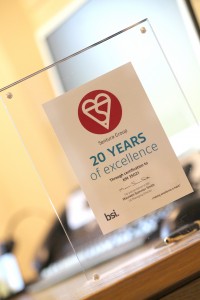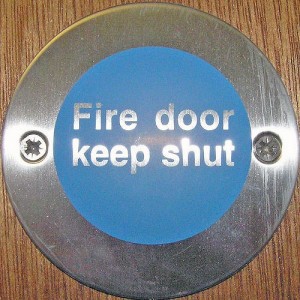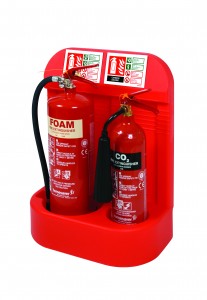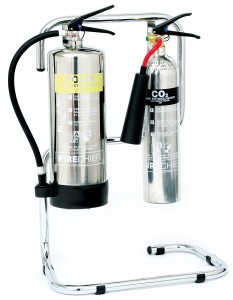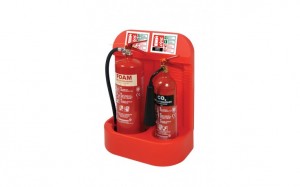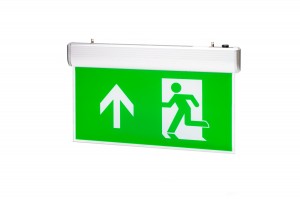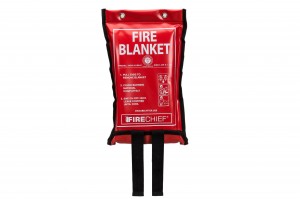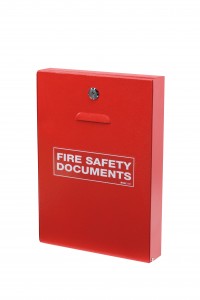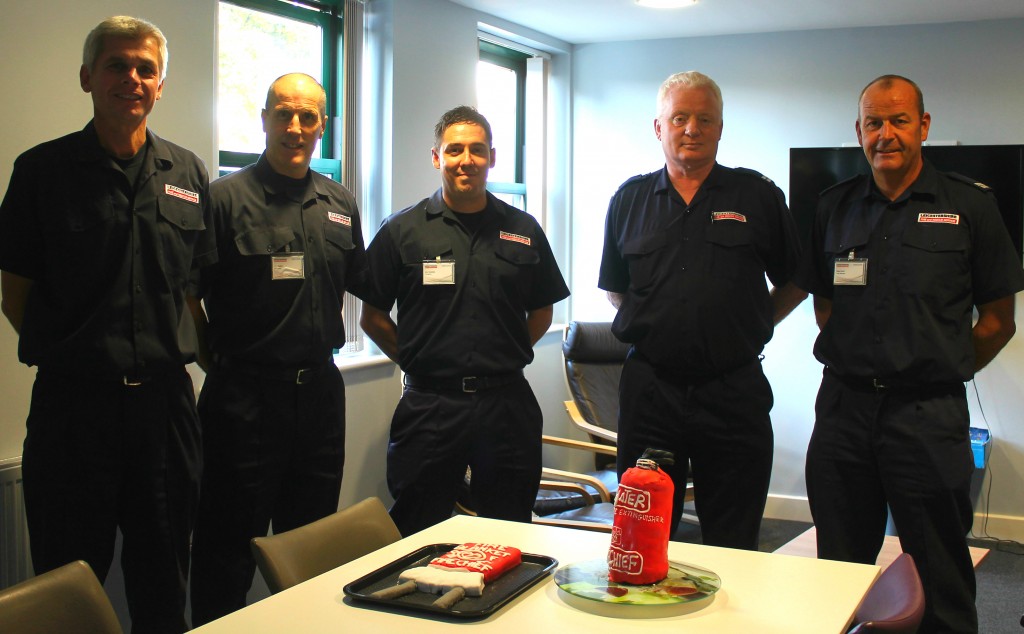Here at Fire Depot our mission is – and has always been – to save lives and property from fire and never has this been more important than now. But with all the current speculation and uncertainty regarding fire safety products and regulations, what part do fire safety approvals, certifications and accreditations play?
One of the most significant changes following the introduction of the Regulatory Reform (Fire Safety) Order 2005 is that fire certificates are no longer issued. Instead the onus falls onto a building’s ‘Responsible Person’ to take appropriate action to prevent fire and protect building users in the event of a fire.
With prosecutions on the increase and in the light of recent events, it is increasingly clear that everyone with responsibility for fire safety, whether they are a building’s ‘Responsible Person’ (duty holder in Scotland) or an installer or maintainer of fire safety equipment such as fire doors, fire extinguishers and fire alarms, needs to ensure that they recognize they are responsible and have a duty of care, as in the event of a fire all duty holders may be liable for prosecution.
Responsible Person
Under Articles 8 – 24 of the Fire Safety Order 2005, the Responsible Person of a building has a general duty to take fire precautions. This includes undertaking fire risk assessments and training and maintaining emergency routes and exits, fire detection and firefighting equipment.
Unless you are experienced in undertaking fire risk assessments and putting in place adequate and appropriate fire precautions, it makes sense to bring in a competent fire risk assessor to undertake this on your behalf but do bear in mind that no matter who carries out the fire risk assessment, the Responsible Person as the duty holder retains the responsibility for ensuring the adequacy of that assessment.
When employing a specialist to undertake your fire risk assessment, you should make reasonable checks to ensure that they are competent to do the job properly by for example, checking registrations or certifications from a professional body such as BAFE (British Approvals for Fire Equipment) or the FIA (Fire Industry Association); that they have experience of undertaking fire risk assessments for your kind of business and premises; and requesting references from previous clients in premises of your type. In other words, carry out due diligence and have evidence that you did so.
The same is also true for an installer or maintainer of any fire safety equipment - whether it be fire doors, fire alarms or fire extinguishers - that you may contract out to. Check that they have third party accreditations and that the equipment they are using is reputable, fully tested and carries the appropriate fire approvals. You can search for certified products on the LCPB (Loss Prevention Certification Board) RedBook Live website
Installers and maintainers
For installers and maintainers of fire protection equipment, never has it been more important to ensure that you are installing fire safety products which are approved to current UK fire safety standards.
Sentura Group (of which Fire Depot is a part) has many third party accreditations having achieved ISO9001 approval every year since 1999 and held a licence for the prestigious British Kite Mark for over 20 years. We also hold the internationally respected BRE LPCB mark of approval (which many insurers and specifiers look for), so you can have complete confidence in installing fire protection products purchased from us.
Keeping commercial and industrial premises safe from fire is a huge responsibility. Life is precious and property and assets matter. For expert help and advice on all fire protection and safety products, please contact the Fire Depot team on 0330 999 2233, email us at sales@firedepot.co.uk or visit www.firedepot.co.uk to see our full range of fire safety products.[related_products is_auto_added="1"]
Here at Fire Depot our mission is – and has always been – to save lives and property from fire and never has this been more important than now. But […]
As recent events have all too tragically shown, having active fire prevention such as a fire alarm system, as well as passive protection measures like fire doors, is critical in helping to preserve life when a fire breaks out.
But what are the various types of fire alarm systems available and what is the difference between them?
Commercial fire alarm systems fall very broadly into two categories, conventional and addressable. In a conventional system, the various zones are wired from the alarm control panel on a radial circuit. The zone producing the fault or fire is indicated at the control panel but the individual detectors are not identified at the panel. An extension of the conventional system was introduced in the 1990’s with the introduction of two wire systems where, as the name suggests, two wires are used firstly as a detection circuit and then if the alarm is activated they carry the alarm signal.
With an addressable system - normally wired as a ring - each device is given a unique address so the detector or call point originating the alarm can be identified at the control panel and text on the panel indicates precisely the point causing the problem.
Addressable systems are termed as being either “open” or “closed” (although some manufacturers prefer the term “managed”). In an open protocol system, devices by such manufacturers as Apollo and Hochiki, are suitable for use on panels made by Kentec and C-Tec, to name just two. Closed or managed protocol systems, however, are where the devices and panels are made by one manufacturer, and the whole system is designed to work only with equipment from that manufacturer. A further, and more recent, development in the marketplace has been the emergence of wireless systems.
The importance of design and testing
The critical importance of designing the fire alarm system correctly at the point of installation cannot be underestimated. BS 5839-1: 2013 is the current code of practice that makes recommendations for the design, installation, commissioning and maintenance of fire detection and fire alarm systems in non-domestic premises.
A key part of BS5839-1 is the need to design the system to reduce or eliminate false alarms. These are not only costly to the Fire Services but there is also a cost to a business in terms of lost production and disruption caused by staff evacuation. According to the Fire Industry Association, it is estimated that false alarms cost UK businesses more than £1 billion per annum. You can read our previous blog posts about false alarms to learn more about how the design of your fire system can assist in reducing false alarm incidents and their associated costs.
Following installation ALL fire alarm equipment should be checked, including the smoke and heat detectors, the sounders, beacons and relays. Test and record everything and most importantly, it shouldn’t be assumed that because a device is connected, it will set off the alarm. It should be tested to prove it!
Maintenance and user training
When completing a fire alarm install, it’s all too easy for the engineer to test the last detector, check the panel is showing “normal” and then pack up his tools and leave, without first fully demonstrating the fire alarm to the end user – and while explaining the functions of the detectors and alarms, there is also an opportunity to cover the avoidance of false alarms.
It is also very important that all detectors are tested at least once a year. It’s amazing how much dust is created by an air conditioning outlet for example and the build-up of dust on a detector, caused perhaps by building work or air conditioning outlets is one of the five major causes of fire false alarms according to fire brigades. Here at Fire Depot we stock the Testifier range of testers to ensure that detector servicing is completed efficiently and safely.
Life is precious and property and assets matter. For help and advice on all fire protection and safety products, please contact the Fire Depot team on 0330 999 2233, email us at sales@firedepot.co.uk or visit www.firedepot.co.uk to see our full range of fire safety products.[related_products is_auto_added="1"]
As recent events have all too tragically shown, having active fire prevention such as a fire alarm system, as well as passive protection measures like fire doors, is critical in […]
When is a door, not just a door? When it’s a fire door. Fire doors are a critical element in fire safety and a requirement in every commercial, public and multiple occupancy building, yet their importance in saving lives is often overlooked.
The simple purpose of a fire door in every day use is just the same as any other door. However, since a breakout of fire is never predictable, the fire door, unlike any other door, is then required to perform its prime purpose as part of a building’s passive fire protection system allowing all rooms to be separated or compartmented from other rooms in order to:
• contain a fire in the compartment in which it starts
• protect the occupants (and contents) of other compartments
• provide a safe, protected route to allow the buildings occupants to escape.
Given that fire doors play a major role in the fire safety and protection of buildings, once a fire door has been correctly installed, it is critical that it is also then correctly used, inspected and maintained. Failure to do so can place property and lives at risk, and may even result in criminal prosecution.
As a building occupier or tenant you are best placed to notice the state of the fire doors in your premises and there some simple checks you can - and should - undertake as follows:
1. Look for a label or similar marking to show that it’s certificated
2. Ensure the door closes correctly around all parts of the frame and that the closer is fitted securely
3. Check the hinges are firmly fixed into the door and frame with no missing screws
4. Make sure the door is not damaged or wedged / propped open
5. Check that the door is marked correctly with the appropriate signage
If you have any concerns about the safety of the fire doors in your building, you should report these to the building manager, landlord or property maintenance department, as the ‘responsible person’ without delay.
Under the Fire Safety Order, they in turn, must ensure that all fire doors are inspected as part of a building’s fire safety risk assessment and fire management plan. This means checking at least every six months that all fire doors are working correctly and are properly maintained – and as often as every three months in a building with high traffic where fire doors are heavily used.
So if you are a building owner or manager and the ‘responsible person’, what should you be checking the fire doors for? The British Woodworking Federation has prepared these helpful guidelines and checklist but ideally you should arrange for your fire door inspections to be undertaken by a trained expert who will also be able to advise on any safety or non compliance issues and the action required to rectify them.
You can find more information on the Fire Door Inspection Scheme at www.fdis.co.uk and the UK Fire Door Installer Register is a new industry-led initiative backed by the UK's leading fire door experts, associations and organisations, which aims to bring greater recognition to professional fire door installers and to help building owners who need to find qualified and certified people they can trust.
In part 2 of this blog, we will look at the various elements of door furniture and fittings that make up a fire door and the part they each play in ensuring a building’s passive fire protection is effective.
Life is precious and property and assets matter. For help and advice on all fire protection and safety products, please contact the Fire Depot team on 0330 999 2233, email us at sales@firedepot.co.uk or visit www.firedepot.co.uk to see our range of fire safety products.
[related_products is_auto_added="1"]
When is a door, not just a door? When it’s a fire door. Fire doors are a critical element in fire safety and a requirement in every commercial, public and […]
A fire extinguisher stand might not be your first thought when you install a fire extinguisher. After all, it can be hung off a bracket on the wall just as the fire standards dictate, so what exactly are the benefits of fire extinguisher stands?
This may well depend on the type of environment the fire extinguisher/s are in. Our rotationally moulded extinguisher stands for example, have a recessed base as opposed to a standard flat base. This makes them an ideal option for public areas with high footfall such as schools, shops and offices, where the stands are much more likely to get knocked. We also carry two part rotationally moulded stands, which come flat packed for easy storage, are durable and 100 percent recyclable, so good for the environment too!
Composite extinguisher stands are of a non-GRP construction, which means they are suitable for use in food preparation areas. These stands also feature a skirting board cut out to allow them to be put right up to the wall thus removing the chance of dirt collecting behind the stand.
Here at Fire Depot, we also stock lightweight, contemporary chrome extinguisher stands. They are ideal for design-led interiors such as prestige office areas and hotels. To complete the upmarket look, they are commonly used with our Elite range of chrome extinguishers.
However, there is another, slightly less obvious advantage to using fire extinguisher stands in older buildings, which is worthy of consideration. According to the Health & Safety Executive (HSE), asbestos is still present in millions of business premises that were built before the year 2000. Before its dangers were known, asbestos was often used in buildings for insulation, flooring and roofing and was sprayed on ceilings and walls. Although it is now banned in the UK, tradesmen are warned to be aware of the dangers of disturbing asbestos fibres when drilling walls - for extinguisher brackets for example - so rather than take this risk, an extinguisher stand would be a perfect solution here!
The Health and Safety Executive website - http://www.hse.gov.uk/asbestos - has lots more information about working with asbestos. You can also download the HSE Beware Asbestos web app at http://www.beware-asbestos.info
Life is precious and buildings and assets matter. You can view our full range of fire extinguisher stands here and please do get in touch with the team here at Fire Depot on 0330 999 2233 to discuss your requirements. We are always happy to help and advise.
[related_products is_auto_added="1"]
A fire extinguisher stand might not be your first thought when you install a fire extinguisher. After all, it can be hung off a bracket on the wall just as the […]
Every business is different but there are some key pieces of fire safety equipment that every organisation needs whether they are in an office environment, a warehouse or a factory.
Fire Extinguishers
Every workspace needs at least one fire extinguisher. The number and different types of extinguishers required will depend on the size of your premises and also the kind of fire risks related to your office, factory or warehouse but you will certainly need one or more of the following:
• Carbon Dioxide (CO2) Extinguisher: Ideal for all electrical risks and where oils and spirits etc are in use as it is harmless to delicate equipment and materials.
• Foam Fire Extinguisher: A good solution for multi-risk usage.
• Wet Chemical Extinguisher: Will cool burning oils and reduce re-ignition of the flames.
• Water Fire Extinguisher: A well performing, multiple purpose extinguisher.
• Water Additive Fire Extinguisher: Contains a powerful 'EcoSpray' additive and works well where manual handling restrictions apply.
• Powder Fire Extinguisher: Can tackle most fires which involve wood, paper, flammable liquids and electrics. Powder Fire extinguishers can also be used on vehicle fires and can be stored in cars or commercial vehicles.
Fire Alarm Systems
Fire alarms are essential for every building in a business and should be tested weekly. We have a wide range of fire alarm systems, both battery and mains power operated. Visual alarms are also extremely useful for warehouses and factories as they offer a dual warning with the use of red LED technology as well as an audible alarm to draw the attention of all employees in its range.
Fire Exit Signs
Fire exit signs are essential for all businesses to guide users to the correct exit. Fire Depot supply emergency exit boxes and exit hanging signs which use long life LEDs for maximum durability in the case of a fire.
Emergency Lighting
During a fire, there is an increased risk of the main power supply cutting out which means emergency lighting is necessary for employees and customers to exit safely. The Emergency lights provided by Fire Depot will operate in emergency mode for up to 3 hours. Read our Emergency Lighting blog for more information on this important subject.
Fire Blankets
No kitchen area is complete without a fire blanket to smother flames should the need arise. Available in a range of sizes and in either a hard or soft case, the blanket is accessed simply by pulling on the Velcro strips.
Fire Safety Logbooks and document storage cabinets
It is essential to keep all fire documents that a fire officer would need, such as Fire Safety Logbooks containing fire equipment maintenance records and plans relating to the building, in a safe place such as a lockable fire safety document storage cabinet. Our full range can be viewed here
First Aid Kit
Accidents of all kinds occur, and having a First Aid Kit with all its contents intact is essential. Over the years, various bits and pieces may have been used but not replaced. However, not only are you responsible for supplying a first aid kit, but you are also accountable for replacing expired or used products within the kit, so take this opportunity to have a look and see what is missing to ensure that your business is prepared for any accident.
Life is precious and property and assets matter, so at Fire Depot we make it our mission to provide quality, approved fire protection equipment and to share fire safety advice and fire equipment recommendations. Visit www.firedepot.co.uk for more fire safety product information or call us on 0330 999 2233 to speak to our friendly team of experts.[related_products is_auto_added="1"]
Every business is different but there are some key pieces of fire safety equipment that every organisation needs whether they are in an office environment, a warehouse or a factory. Fire […]
Many building owners see emergency lighting as a ‘fit and forget’ system a survey has found, with almost 75 per cent considering the maintenance of such lighting as being simply a ‘tick box’ exercise.
However, according to The Industry Committee for Emergency Lighting (ICEL), the legal requirement is that non-domestic buildings must be safe at all times, even if mains power failure occurs. Therefore, nearly all such buildings must have emergency lighting fitted and maintained and this is the legal responsibility of the person in charge of the building.
The survey, commissioned by fire detection manufacturer Hochiki Europe, also reveals that 56 per cent of European businesses are failing to keep their fire safety systems up to date following internal fit-outs and refurbishments; for example, when walls are put up or doors moved to suit new requirements but the emergency lighting isn’t altered to suit the resulting changes to designated escape routes.
Fire safety regulations require a building owner to undertake a new fire risk assessment when a room or building has had a change of use but many simply do not realise that this is their legal responsibility. This includes making sure that fire-fighting equipment locations are properly illuminated and that there is sufficient signage to ensure that people know which routes to take to leave the building. If this equipment is shifted from one place to another, then dedicated lighting must also be moved at the same time.
Emergency Lighting falls into two primary categories. 'Standby Lighting' and 'Escape Lighting’. Standby Lighting allows companies to continue to occupy a building safely during a power outage with up to 3 hours of 'Standby Power' and has nothing to do with evacuation. 'Escape Lighting' on the other hand, illuminates the escape routes when there is a need to evacuate the building.
However, building owners and managers should be aware that they must recharge the batteries of the emergency lighting on the premises following use or routine testing otherwise they will be breaking the law if the emergency lighting is not functional again before reoccupation.
The survey also highlighted that the emergency lighting installations in half of our public buildings no longer meets the required lighting standards. The top five failings reported were:
Inadequate emergency lighting signage
Inadequate illuminance levels
Blocked emergency exits
Batteries not charged or not working
Inadequate logbook records being kept
Life is precious and property and assets matter, so if you need advice or guidance about any fire safety product - including emergency lighting, the Fire Depot team of technical experts is available to provide help and advice. Call us today on 0330 999 2233[related_products is_auto_added="1"]
Many building owners see emergency lighting as a ‘fit and forget’ system a survey has found, with almost 75 per cent considering the maintenance of such lighting as being simply […]
The team at Fire Depot will be cheering on two charity rugby teams throughout their attempt to break the Guinness World Record for the longest continuous game of Rugby Union this weekend.
46 players will be taking on the challenge of playing more than 31 hours of Rugby, kicking off at 8am on Friday 12 May and finishing at 3pm on Saturday 13 May. They are also aiming to raise £60,000 for two charities, The Firefighters Charity and Scotty’s Little Soldiers, through sponsorship and donations.
The Fire Fighters Team includes both supporters of the Charity and some active fire fighters but none of the players have taken part in this type of World Record event before. However, some of the players on The Scotty’s Little Soldiers Team have taken part in previous World Record games and so have experience of the endurance that will be needed to complete the challenge!
Laurie Pollard, Managing Partner at Fire Depot said: ‘We are delighted to be able to support this amazing event by having our logo on the back of the Fire Fighters team shirts, as well as supplying some equipment, such as Gas Horns to help the crowd make some noise to encourage the teams to keep going for the 31 hours of the match. We wish both teams all the best in their World Record attempt and will be cheering them on from the sidelines’.
The Fire Fighters Charity supports over 5,000 beneficiaries a year through a broad range of services. Whether injured, ill or in need of psychological support to come to terms with the life and death situations they face on a daily basis, the Fire Fighters charity exists to support the everyday heroes of the UK fire community.
The Scotty’s Little Soldiers charity provides comfort and care to the children of fallen heroes when they most need it, sending them on holidays and providing presents and trips throughout the year for example.[related_products is_auto_added="1"]
The team at Fire Depot will be cheering on two charity rugby teams throughout their attempt to break the Guinness World Record for the longest continuous game of Rugby Union […]
Today, 28 April, is World Safety & Health at Work Day and the 14th year of this international campaign to promote a culture in which the right to a safe and healthy working environment is respected and where governments, employers and workers actively participate in securing a safe and healthy working environment.
This is an aspiration very close to our hearts here at Fire Depot. As part of the Sentura Group, we too have a vision of a world where every workplace is safe and secure, the users are happy and healthy, and where needless energy consumption is cut and productivity is optimised – and our mission is to play our part in helping achieve that.
According to the United Nations, 6,300 people die as a result of occupational accidents or work-related diseases every day, resulting in more than 2.3 million deaths per year. And 317 million accidents occur on the job annually; many of which result in extended absences from work. The human cost of this is enormous and the economic burden of poor occupational safety and health practices is estimated at 4 per cent of global Gross Domestic Product per annum.
From small beginnings as a manufacturer of fire blankets 50 years ago to today, the Sentura Group brand portfolio includes Fire Depot which supplies UK-approved fire safety products, and EasiLume which specifies and supplies LED lighting products. We supply commercial and public sector built environments and are proud to say that you'll find our products in many offices, factories, hospitals, prisons, schools, colleges and universities, leisure centres, galleries, museums, exhibition centres, and public malls.
We are committed to quality and have achieved ISO9001 approval every year since 1999 and are licenced for the prestigious British Kitemark. In fact, in 2016 we were one of a number of suppliers selected to receive a special award from the BSI to mark our achievement in holding a Kitemark for over 20 years.
Life is precious and property and assets matter, so if you need advice or guidance about any fire safety product or application or are looking for support in designing an LED lighting system to assist in reducing energy costs and increasing productivity, our team of technical experts is available to provide help and advice. Call us today on 01572 770333.
[related_products is_auto_added="1"]
Today, 28 April, is World Safety & Health at Work Day and the 14th year of this international campaign to promote a culture in which the right to a safe […]
Friday 24 February was ‘Wear Yellow to Work’ day at Fire Depot. Each member of the team donned as much yellow clothing and accessories as they could find and wore their outfits throughout the day in support of the start of the Marie Curie Great Daffodil Appeal 2017.
The company has set a target of raising £500.00 to donate to this year’s Great Daffodil Appeal and is asking its customers and suppliers to help them achieve this by donating via its Just Giving page https://www.justgiving.com/fundraising/Sentura-Group-Marie-Curie-Wear-Yellow
Some members of the Fire Depot team also joined the local Marie Curie Rutland Fundraising Group Great Daffodil collection at the local Tesco store in Oakham.
Laurie Pollard, Managing Partner commented: ‘We wanted to raise money and support this very worthwhile cause, particularly as all the money raised in the area goes to providing care for local terminally ill people. Many people have friends and family who have needed this type of care, so being able to provide more hours of Marie Curie nursing service will make a real difference to people’s lives’.
Research shows that 63% of people want to die in the comfort of their own home yet 55% of people die in hospital, the place many people least want to be. With almost 2,100 nurses, Marie Curie is the leading charity providing free end of life care to people with any terminal illness in their own homes. When someone is cared for at home by Marie Curie, overall costs are around £500 lower even when costs in social care, primary care and community care are taken into account.
Marie Curie needs to raise £5,500 every hour to cover the cost of its entire nursing service across the UK. More than 9,400 people volunteer regularly to raise funds for the charity.[related_products is_auto_added="1"]
Friday 24 February was ‘Wear Yellow to Work’ day at Fire Depot. Each member of the team donned as much yellow clothing and accessories as they could find and wore […]
On Tuesday 4 October the Fire Depot team held a charity bake sale. Many of the team and members of their families baked an array of cakes - including two very creative ones in the shape of a fire extinguisher and a fire blanket! - all in aid of MacMillan Cancer Support. There was plenty of cake left for another day - even after we'd shared some with our friendly firefighters at Oakham Fire Station - in return for a donation to MacMillan of course!
The total after day 1 was £130 - well done everyone! Keep eating the cakes and donating!
On Tuesday 4 October the Fire Depot team held a charity bake sale. Many of the team and members of their families baked an array of cakes – including two […]
Members of the Fire Depot team will be making a splash in the local community by helping out at a car wash being held at Oakham Fire Station this Saturday, 10th September.
Both the firefighters at Oakham Fire Station and the team at Fire Depot are promoting the event and encouraging local people to bring their cars to be washed. Donations will go towards The Fire Fighters Charity – the leading provider of support and rehabilitation to the fire and rescue community. The organisation provides a full package of health and wellbeing support, exactly tailored to the needs of firefighters and also supports retired firefighters and their families.
Firmly established on the fire and rescue service calendar, the National Car Wash League is the Fire Fighters Charity's largest national fundraising event of the year. It costs £9 million a year to keep Charity running – and with no regular government funding, it relies completely on donations and goodwill.
Laurie Pollard, Managing Partner at Fire Depot said: 'This promises to be a fun and worthwhile event. We are very pleased to be able to work with our local fire station in Oakham and to get more involved in the local community here in Rutland. We have a great deal in common with the fire fighters since we are both in the business of fire protection and prevention'. [related_products is_auto_added="1"]
Members of the Fire Depot team will be making a splash in the local community by helping out at a car wash being held at Oakham Fire Station this Saturday, […]
This is probably not a question that many businesses really want to consider but it is, however, absolutely essential to do so.
It is unfortunate, but not uncommon, for businesses to be completely obliterated by a single fire. According to statistics provided by insurance companies, of those businesses that are hit, around 80% cease trading within as little as 18 months. With that in mind, it makes sense for a business to do everything it can to prevent disaster striking.
Your responsibilities
In accordance with the Regulatory Reform (Fire Safety) Order 2005, if you are an employer, a building owner, a landlord, an occupier or anyone else with control of a premises - such as a facilities or building manager or a managing agent - you are responsible for fire safety in a business or other non- domestic premises*. So what steps can you take in order to protect not just the lives of your employees, but your building, its contents and your insurance cover too?
Well it’s not simply a question of having a couple of old water extinguishers on hand or having a battery smoke detector on the ceiling! According to Home Office Fire Statistics for Great Britain, there were 22,000 fires in commercial buildings between April 2013 and March 2014. In 64% of those premises with installed detectors, the technology failed to operate, for reasons including poor positioning of equipment, incorrect installation and/or incompatibility of fire technologies.
The Fire Industry Association (FIA) recommends a robust fire risk assessment, carried out by a competent individual, to ensure that all parts of the building have been accounted for and the risks have been considered and planned for. The risk assessment will highlight not only what fire protection equipment is needed but also where.
Alternatively, the business’s ‘Responsible person’ is also deemed to be competent to carry out their own fire risk assessment under the 2005 Fire Safety Order. In this case, the self-assessment will need to consider each and every area of fire detection, containment and control, so here’s a simple checklist to get you started:
Start with the building
• How is it constructed?
• How is it divided up?
• Are measures in place to stop or slow the spread of fire?
You may be unsure about the construction of the building and what measures are in place for fire protection, such as in-built dry risers for example. In this case you will need to obtain this information, probably from the construction company or building owner. If your building does have in-built dry risers, it’s also worth noting that according to the Fire Service up to 60% of these have never been tested but since these are also the responsibility of the Responsible Person, they can certainly invalidate your insurance if they are not being maintained.
Does your premises need a fire alarm system?
If it does, consider:
• What category is required?
• Has the system been designed by a person qualified to design systems?
• If already installed, has the system been installed correctly?
• Do you have documentation in the form of certificates for the Design, Installation, Commissioning and Handover of the system and were the certificates issued by reputable companies?
• Is the system regularly maintained and is there evidence available to support this, such as the fire alarm log book?
Are there fire extinguishers available for use?
• Are they suitable for the risks?
• Are they correctly maintained?
• Are the extinguishers due for a discharge test?
• Have the persons who are expected to use the extinguishers, received training in the correct type of extinguisher to use and how to use them?
Getting insured
It might appear to be a straightforward process to simply go to an insurance broker and get your business insured and certainly having adequate fire protection equipment installed and maintained by a competent company will reduce the risk of fire causing damage to the business. However, the fire protection equipment you choose may have an effect on your insurance. Insurance companies vary greatly with their criteria, and some may refuse to insure a company or it may even be difficult to insure a business that does not have adequate fire protection under certain circumstances.
We strongly recommend that you use quality equipment installed by a BAFE qualified engineer and that you get help and advice with design, such as that offered by our experts here at Fire Depot. This is especially important when you consider that the Regulatory Reform (Fire Safety) Order of 2005 places ultimate responsibility for competency and engineering skills of the installer or service provider onto the owner of the fire system - and there is nothing to prevent unqualified and inexperienced organisations from operating in the fire industry. Although Professional Organisations such as the Fire Industry Association (FIA) require members to be third-party accredited in the field in which they operate, these are voluntary schemes and some installers still carry out their activities without having been trained or accredited, so beware!
Finally, we suggest you ask your insurance company or broker to arrange a visit and confirm they are happy with your arrangements, and then act on any recommendations they may give you. Insist they confirm in writing once they are happy with your fire safety arrangements.
Tim Mann has more than 30 years’ experience in the electrical industry and has specialised in the fire protection industry for the last 20 years. As Group Technical Manager at Sentura Group, his role is to provide help and advice to ensure that customer’s installations are done right first time and to assist in solving their existing equipment and installations problems.
*Fire safety rules are different in Scotland and Northern Ireland.
[related_products is_auto_added="1"]
This is probably not a question that many businesses really want to consider but it is, however, absolutely essential to do so. It is unfortunate, but not uncommon, for businesses […]

